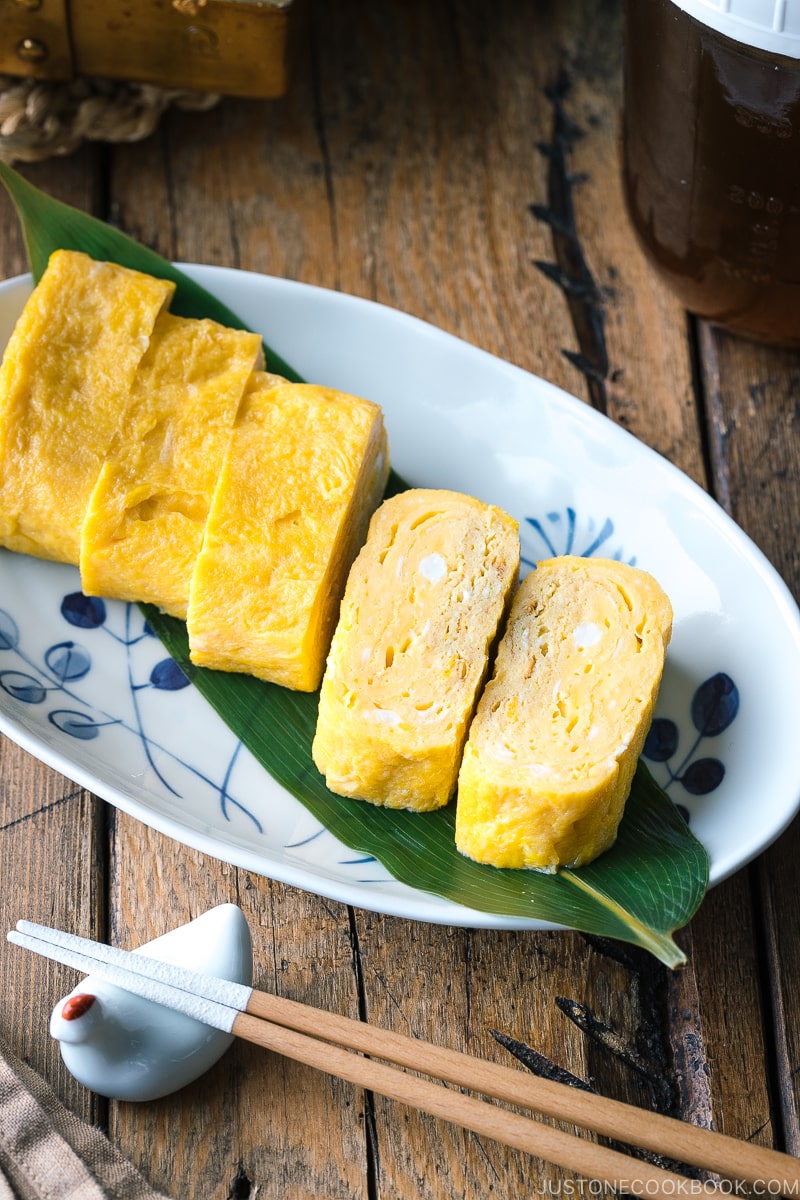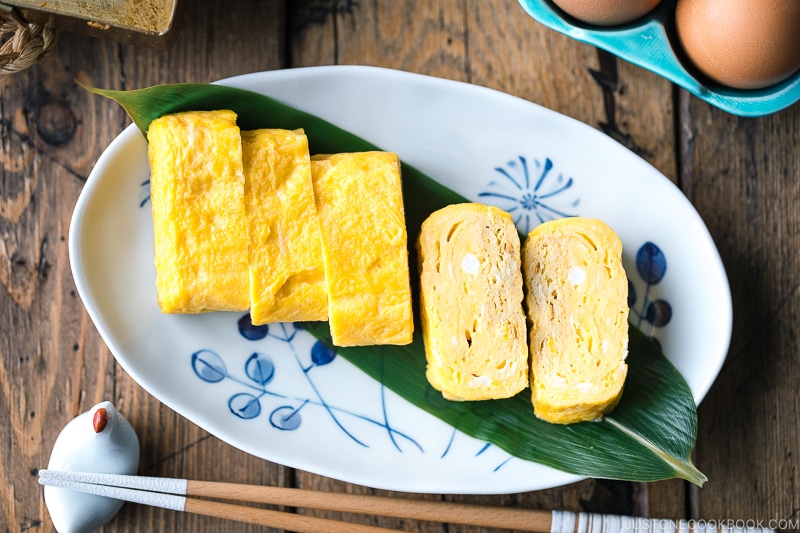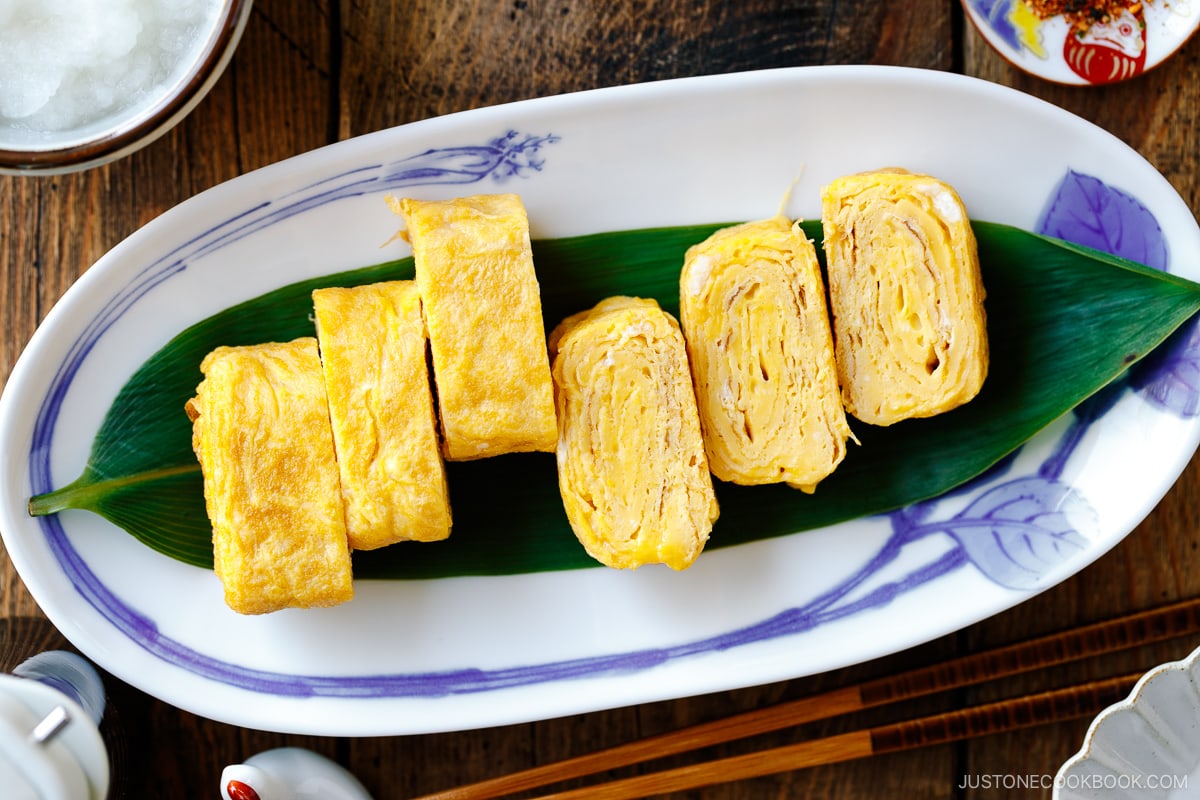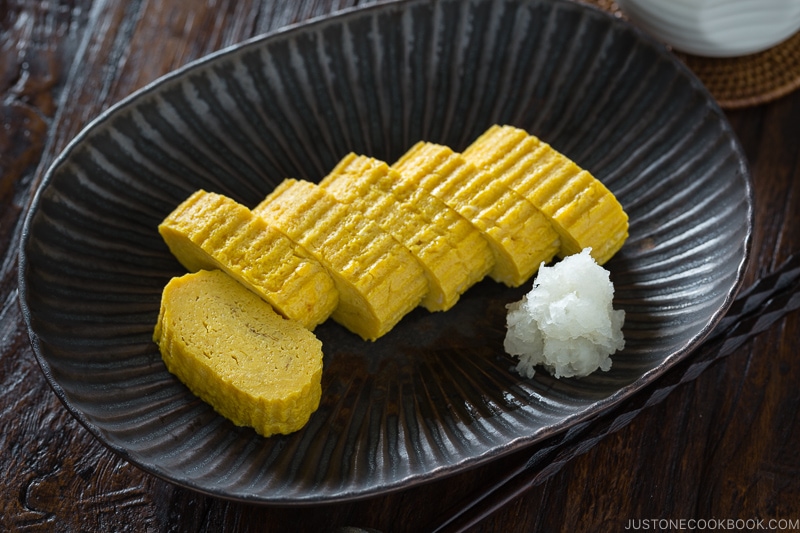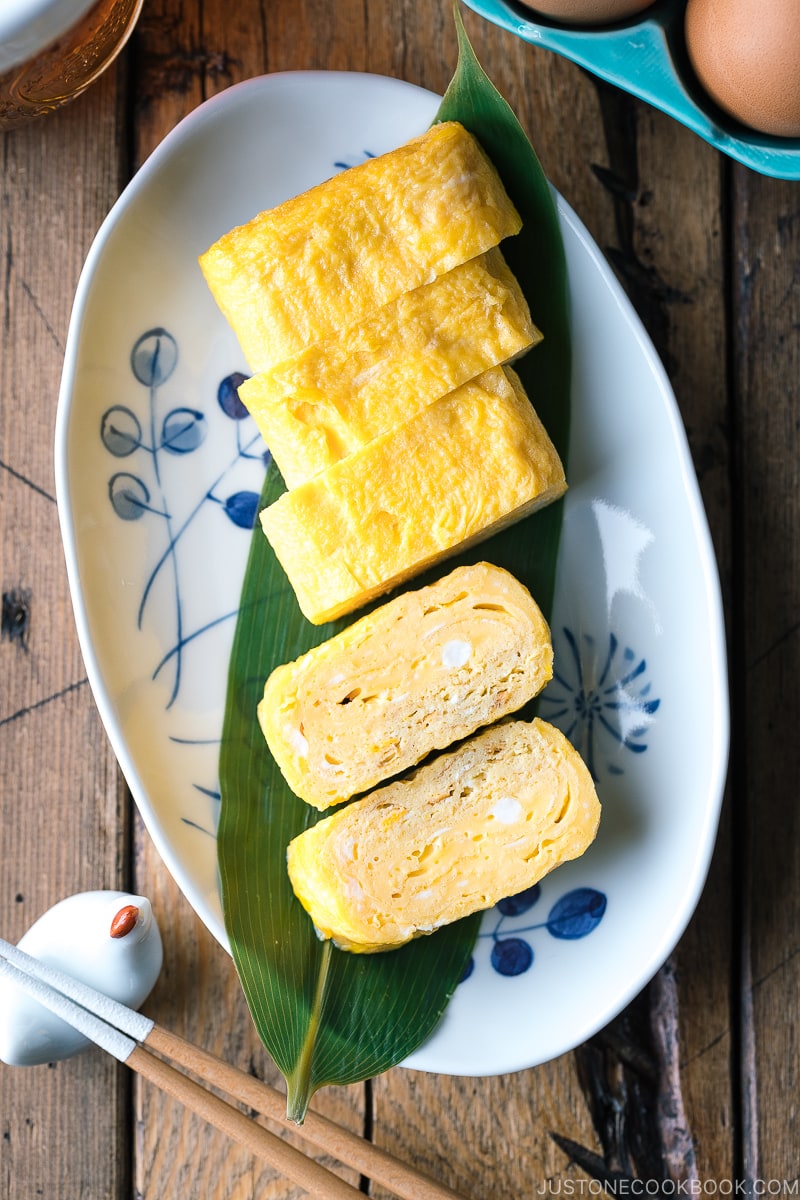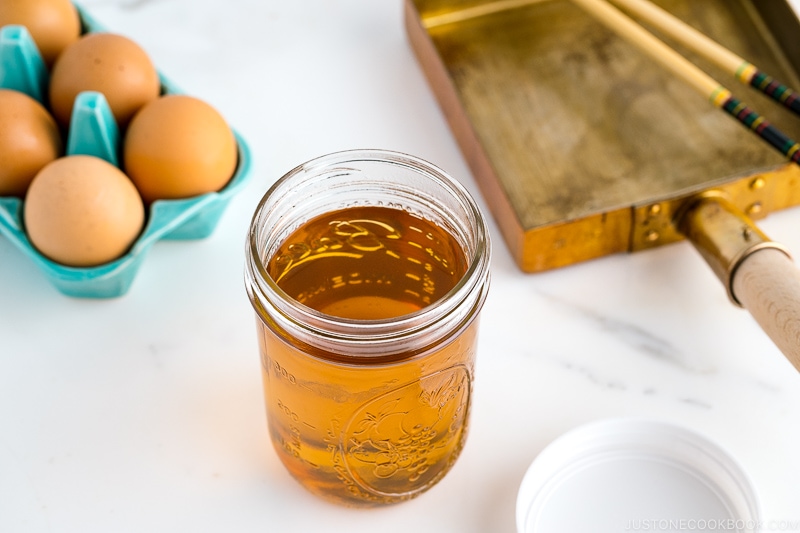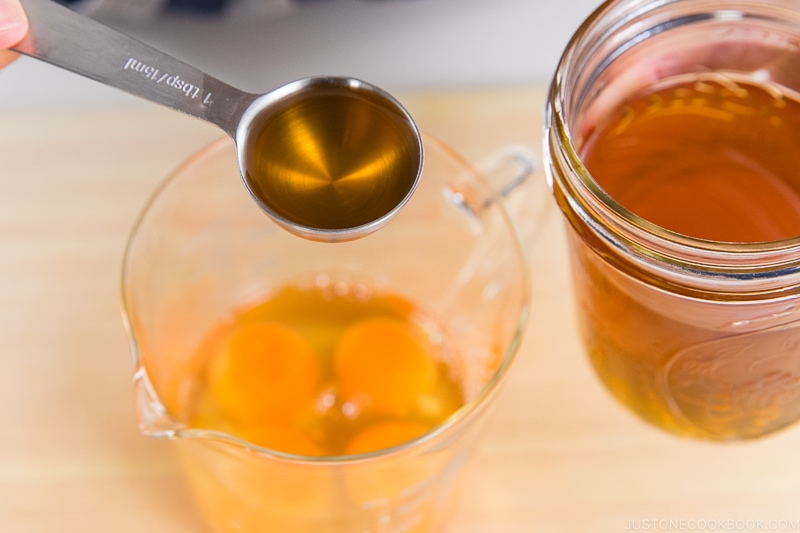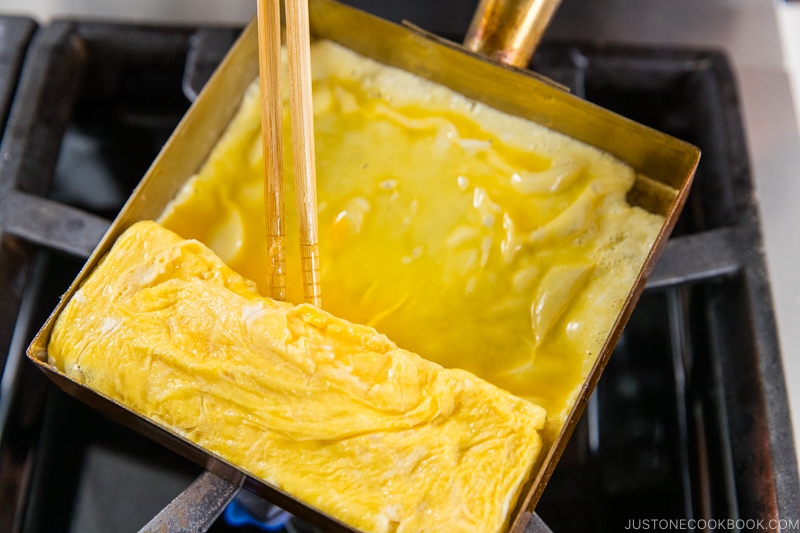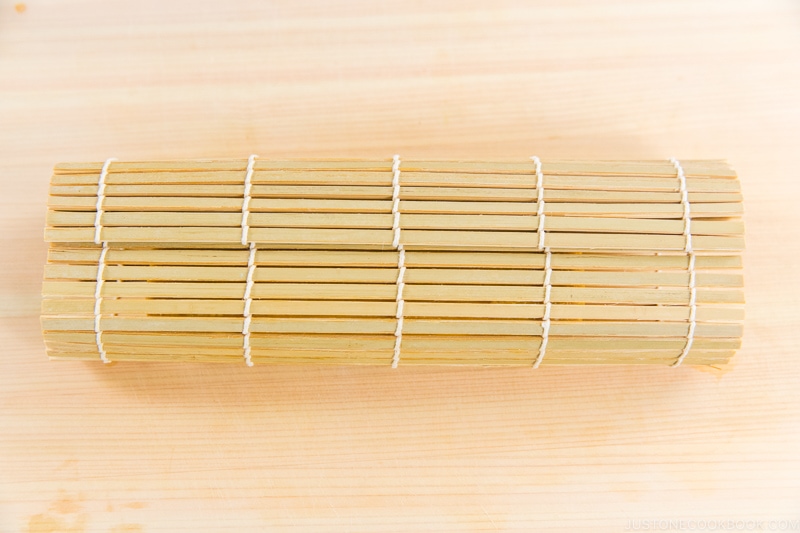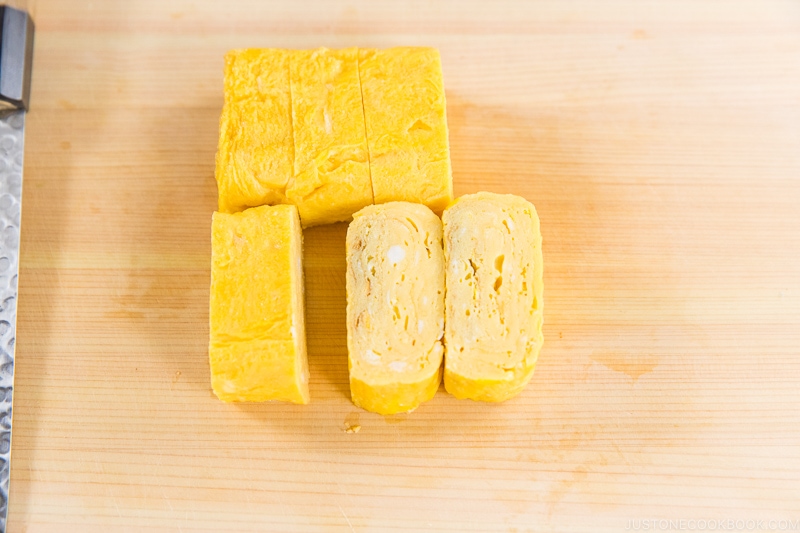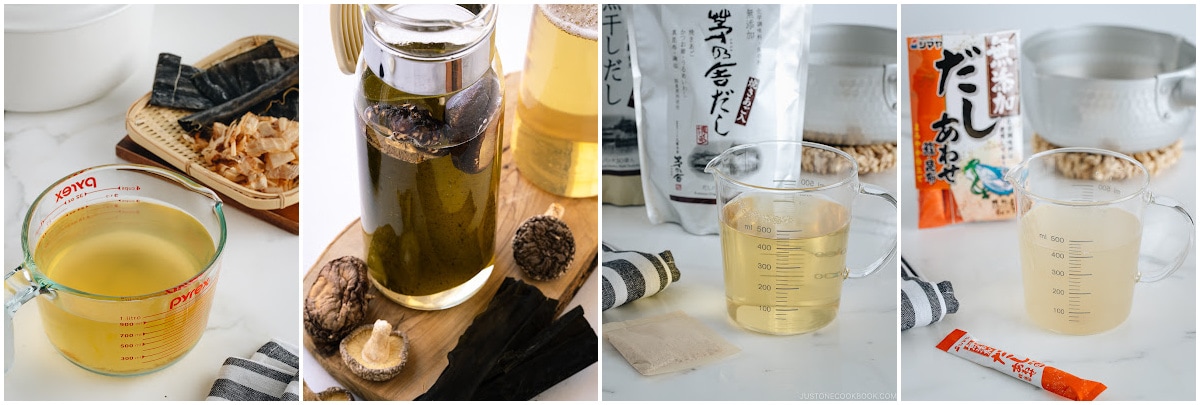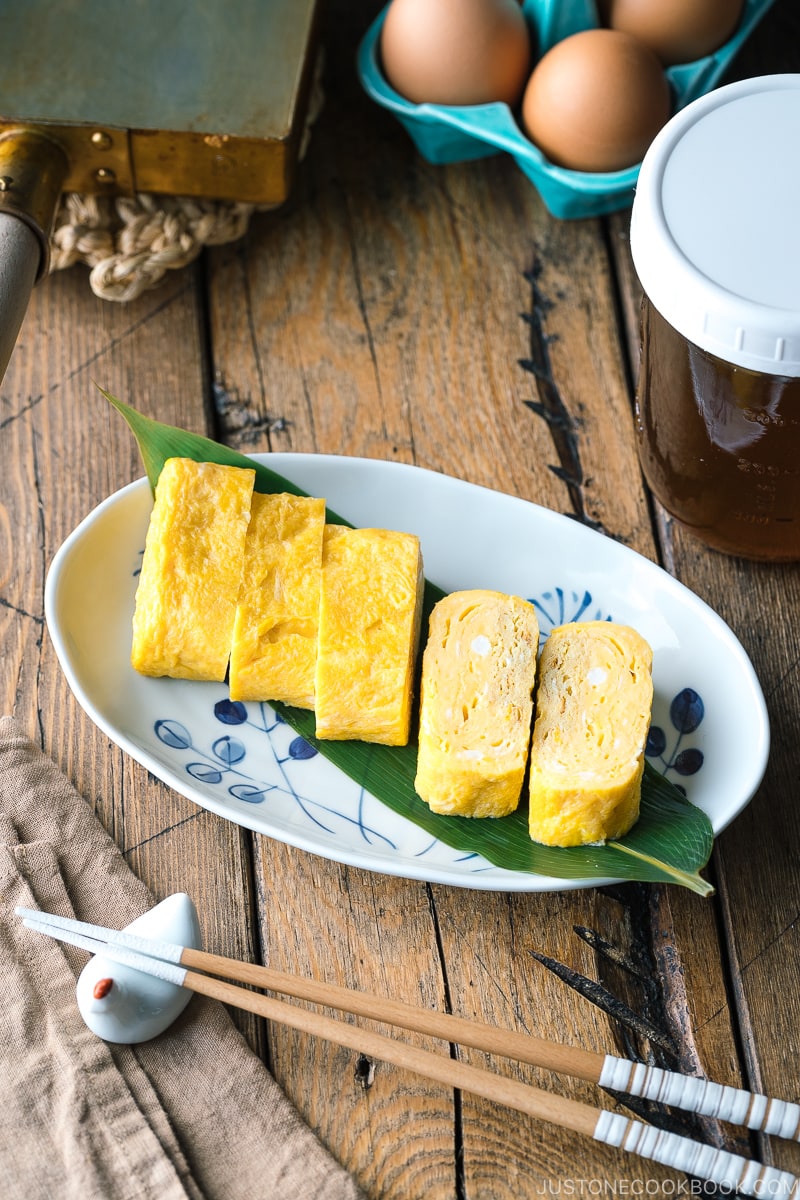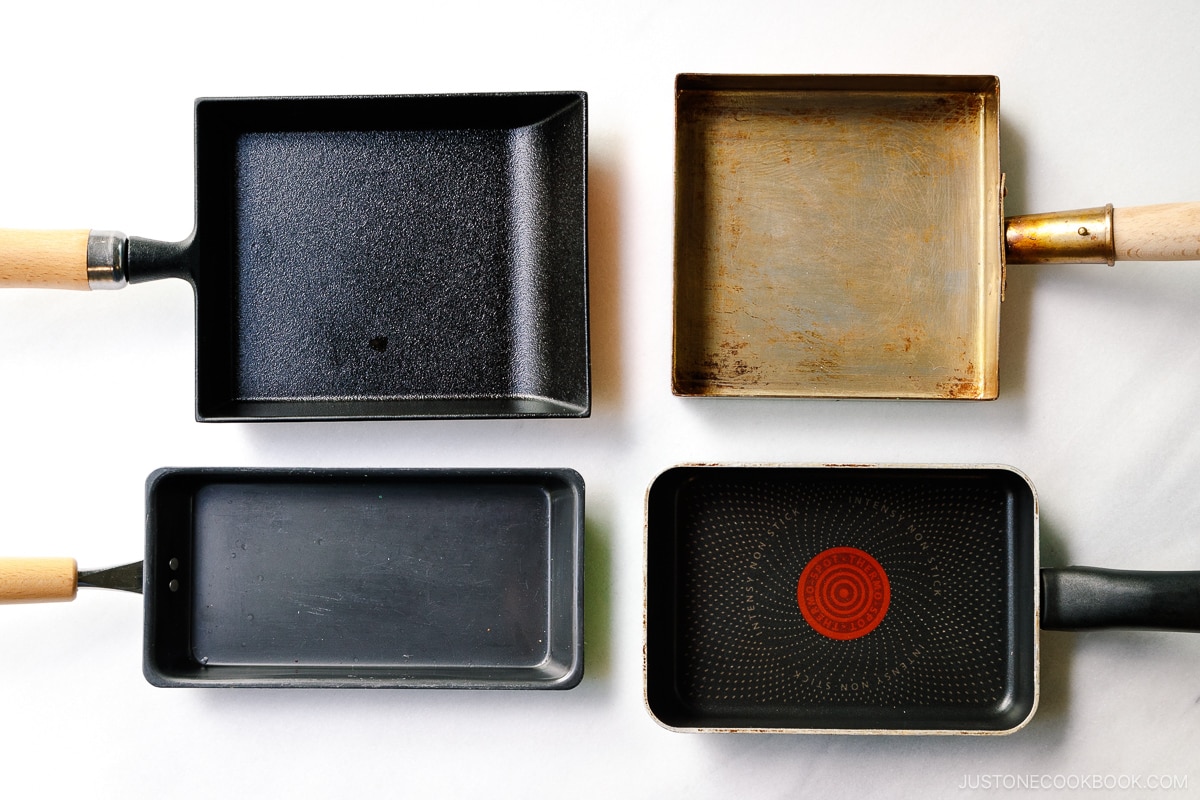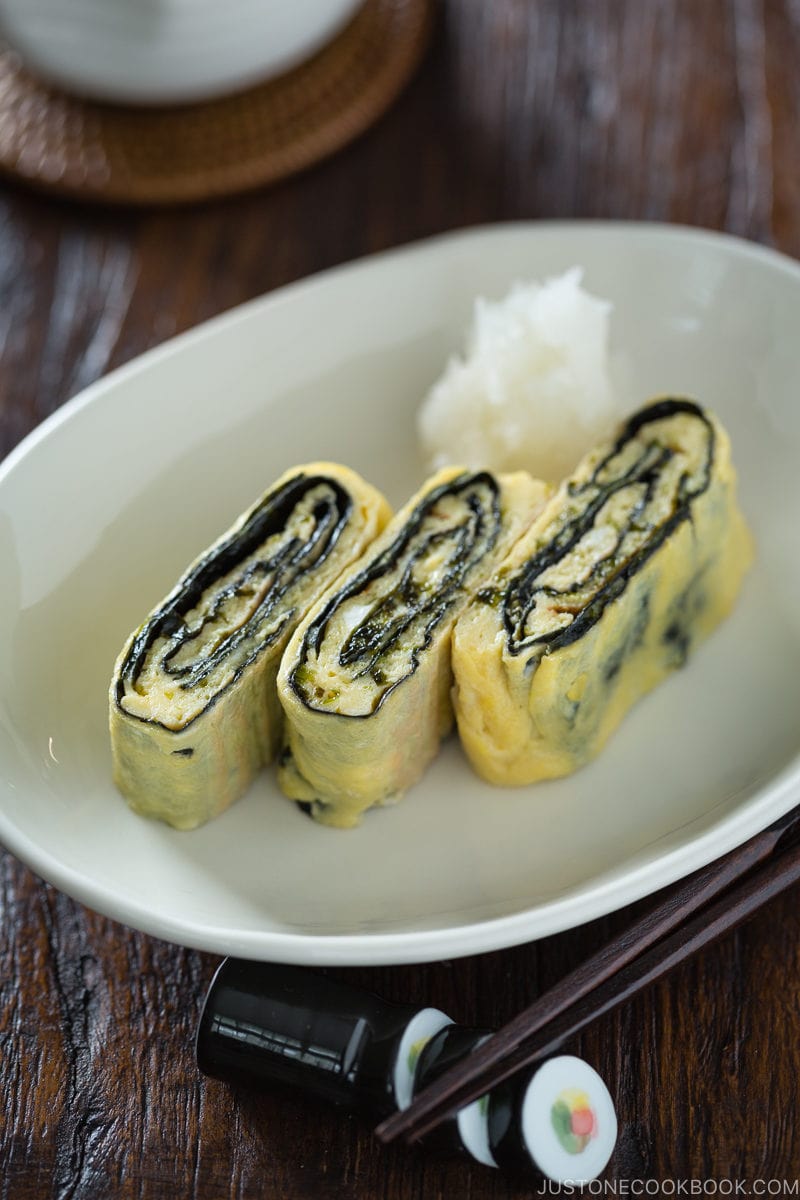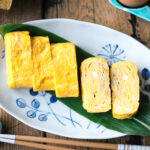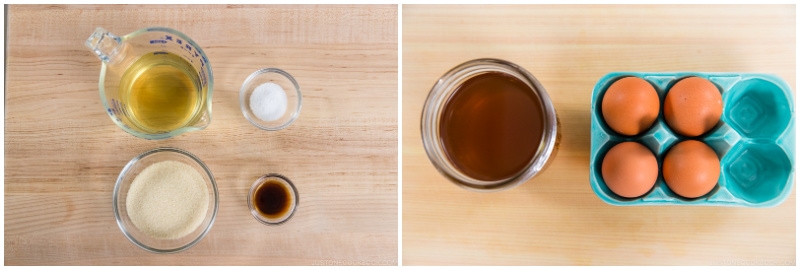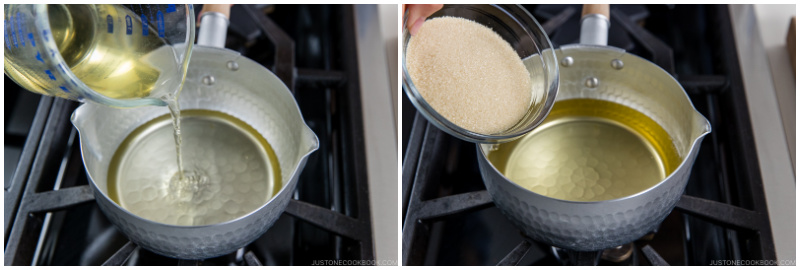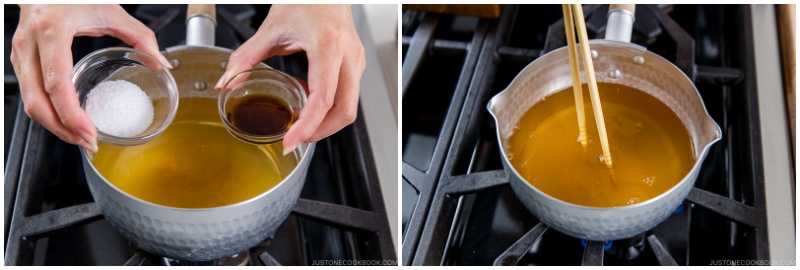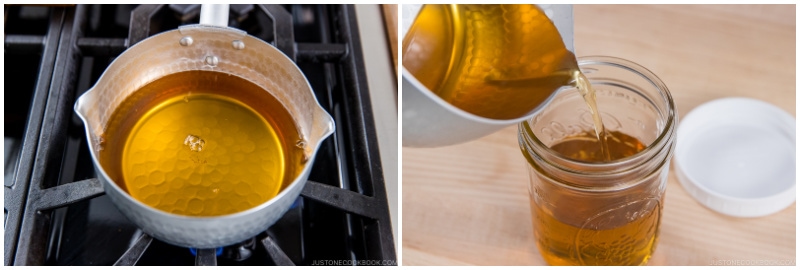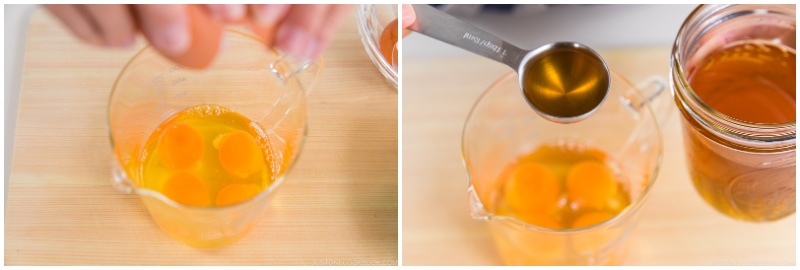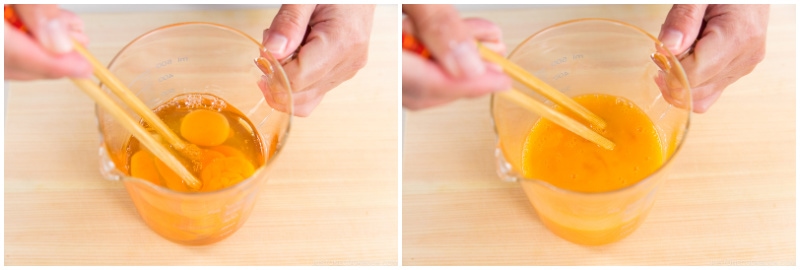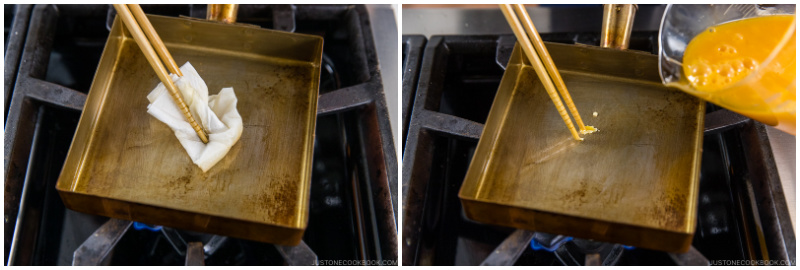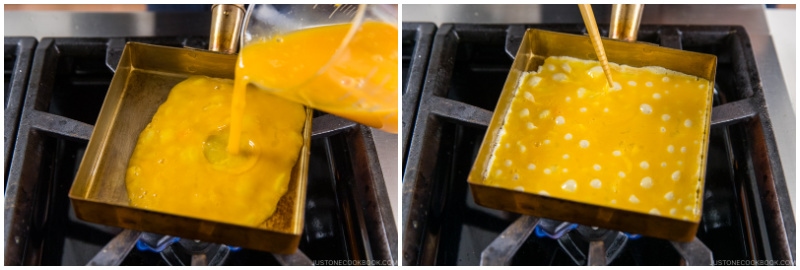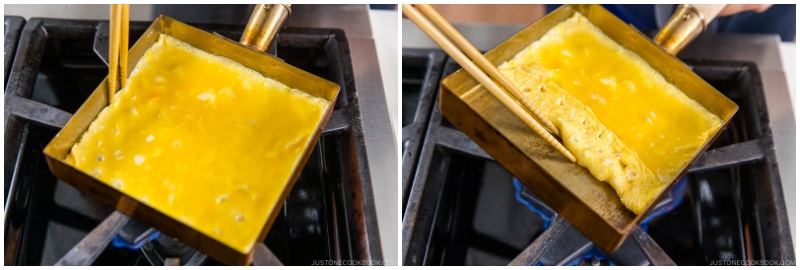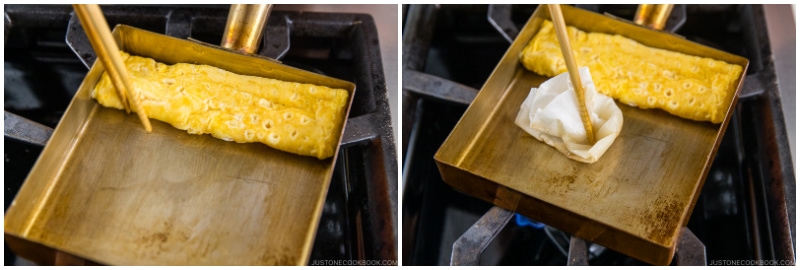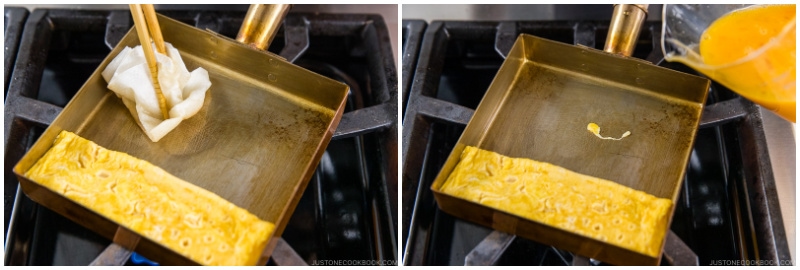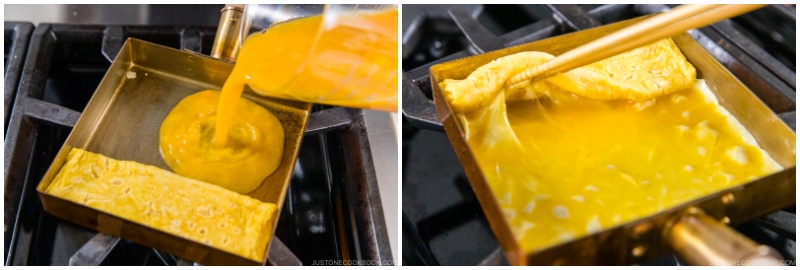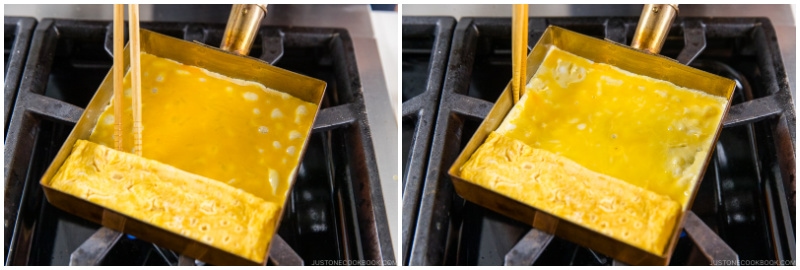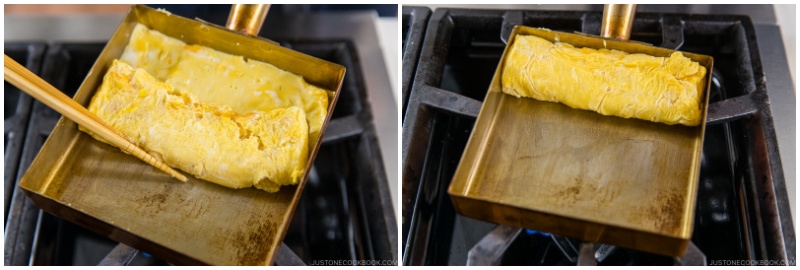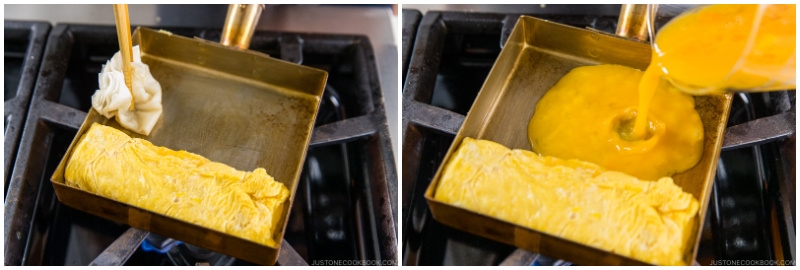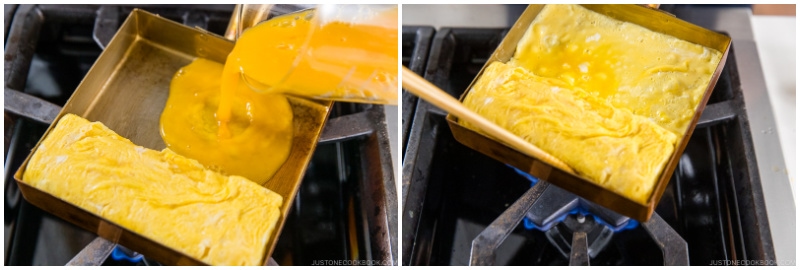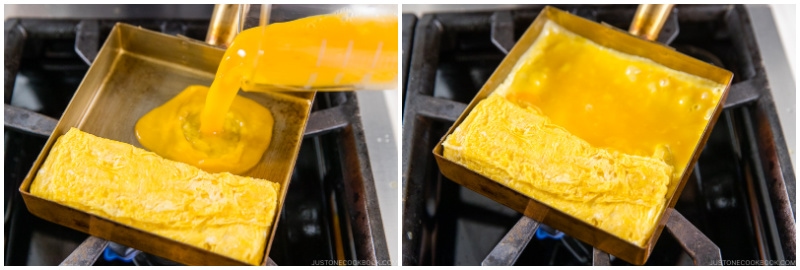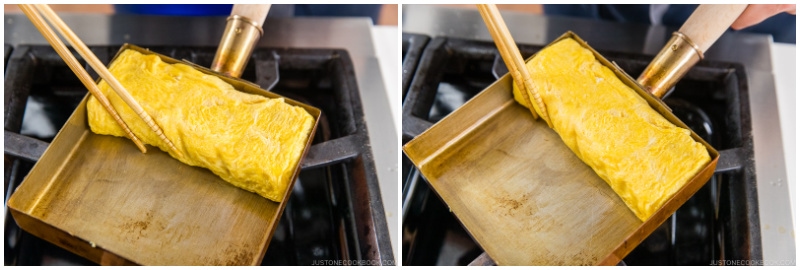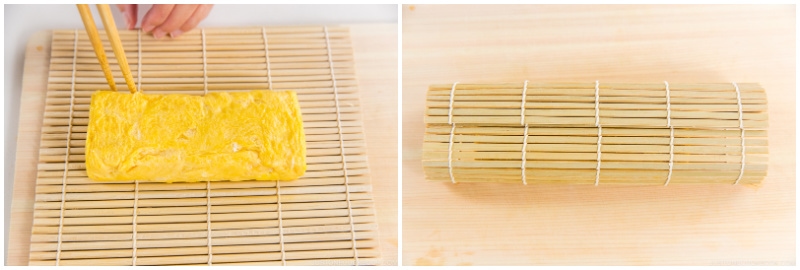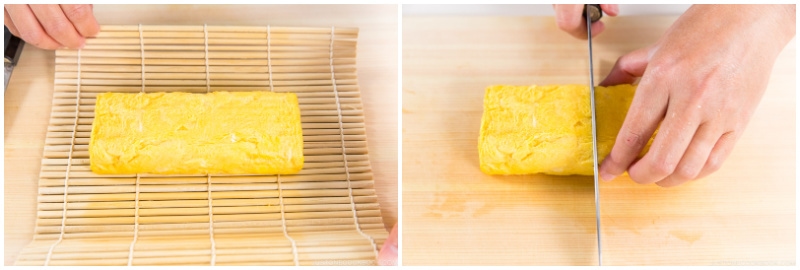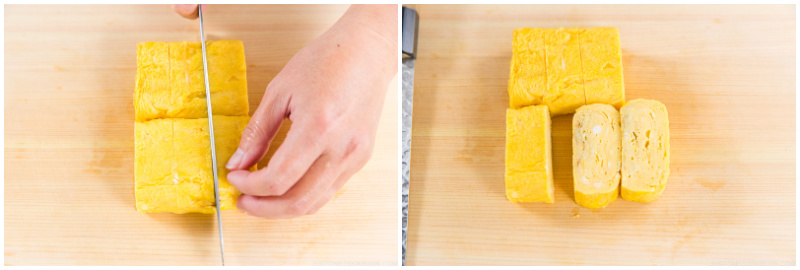Today, I’m sharing a Tokyo-style Japanese Sweet Rolled Omelet or Atsuyaki Tamago (厚焼き玉子). You might have seen this omelette made by Master in the popular Netflix® show—Midnight Diner: Tokyo Stories.
What is a Japanese Rolled Omelet (Omelette)?
Tamagoyaki (卵焼き, 玉子焼き), the Japanese rolled omelette, is known for its bright yellow, miniature pillow-shaped appearance. This petite egg dish is ubiquitous in Japan and is a favored option for breakfast or as a filling for bento boxes. The preparation involves rolling thin layers of seasoned and slightly sweetened egg mixture to create a compact, rectangular shape.
Variations of Tamagoyaki
Tamagoyaki (玉子焼き, 卵焼き) is a general umbrella term for various types of Japanese rolled omelettes. It can be dashimaki or atsuyaki depending on the region.
Ingredients for Atsuyaki Tamago
The best thing about this recipe is that you can make tamagoyaki fast! I prepare sweet dashi ahead of time and make this sweet tamagoyaki for my children’s lunch.
eggs sweet dashi (kanro dashi) — please read more information below cooking oil
How to Make Sweet Dashi (Kanro Dashi)
This golden liquid is called Kanro Dashi (甘露だし) in Japanese, but let’s just call it Sweet Dashi. The soup stock is a simple mixture of dashi, sugar, soy sauce, and salt, which is used to make the Tokyo-style Sweet Rolled Omelet (Atsuyaki Tamago) that I’m sharing here. I usually make one batch and use the sweet dashi throughout the week. Any leftovers can be used as a base in simmered foods or braised vegetables. If you make tamagoyaki regularly, having this sweet dashi stashed away in the pantry will help you get to your meal prep quicker.
How to Make Sweet Rolled Omelet (Atsuyaki Tamago)
How to Prepare Dashi (Japanese Soup Stock)
My personal recommendation is the first 3 options, but here are the instructions on how to make dashi:
Kombu and katsuo dashi made from scratch (takes 20 minutes) Vegan/vegetarian dashi made from scratch (takes 20 minutes) Dashi made with a dashi packet (takes 3 minutes) Dashi made with dashi powder (takes 1 minute)
Cooking Tips
Practice, practice, practice — I can’t tell you enough. I started making tamagoyaki since middle school. Yet, when I take a long break, my rolling skill gets rusty. After making more tamagoyaki (on consecutive days), I get the cooking rhythm back. Don’t get discouraged even after trying a couple of times. You just need a little more practice. Figure out what works for you — Despite my tutorial and tips, the result comes down to your own pan, heating element, and skill. Each plays a role, so pay attention to the details. Be flexible and adapt my technique to what you have.
Tamagoyaki Pan
Tamagoyaki is a staple in Japanese home cooking. We love the eggy goodness so much that we even invested in a special pan for making tamagoyaki at home! Tamagoyaki pans are either square or rectangular, so the tamagoyaki will easily turn into a rectangular shape. In the past, I’ve tried various types of tamagoyaki pans:
non-stick tamagoyaki pan copper tamagoyaki pan carbon steel tamagoyaki pan cast iron tamagoyaki pan (my favorite since 2024)
Can I Use a Round Frying Pan for Tamagoyaki?
Yes! I’ve made the rolled omelet with a round frying pan many times and it works just fine. The drawbacks are mainly appearance (see below):
It would be flatter — A round pan is typically wider and bigger than a Tamagoyaki pan so it will require more egg mixture to make each layer. If you use the same recipe, you will have a flatter rolled egg. It would be uneven — Because each layer of egg is rolled from a round shape, it’s natural that both ends don’t have complete layers of egg. The center of the tamagoyaki will still look nice. It would be looser — The curved edges of a round frying pan are less ideal for “tightening up” the egg rolls.
As you see, it’s all related to the “look” of the tamagoyaki. You can still make pretty good tamagoyaki even with a regular frying pan! The trick is to increase the egg mixture to create a complete look.
What to Serve with Tamagoyaki
Tamagoyaki is a versatile side, but I think it is extra special when enjoyed in a traditional Japanese-style breakfast. If you’re up for a hearty Japanese breakfast, try it on a weekend! Here are some ideas to serve tamagoyaki with:
Steamed Rice Salted Salmon Spinach gomaae or Green Bean Shiraae Tsukemono (Japanese Pickles) Miso Soup
Of course, all these dishes can be prepared ahead of time, so you won’t have to spend the whole morning cooking everything at once. Wish to learn more about Japanese cooking? Sign up for our free newsletter to receive cooking tips & recipe updates! And stay in touch with me on Facebook, Pinterest, YouTube, and Instagram.
